During the breeding season of 2017, a mixed breeding pair Herring Gull x Lesser Black-backed Gull was present in the gull colony of IJmuiden Forteiland, the Netherlands. Examples of these two species breeding are very rare in the Netherlands and in Europe.
As part of our long-term research of breeding gulls at this location we were able to follow this pair closely. Below follows our report.
By Fred Cottaar, Maarten van Kleinwee and José Verbeek-Cottaar. Photos and videos by Maarten van Kleinwee.
This article is also available as a download on ResearchGate.
Dit artikel is er ook in het Nederlands
IJmuiden Forteiland as a research area
A mixed colony of Herring and Lesser Black-backed Gulls has been present at the ‘Forteiland’ island at IJmuiden for many years. It is followed closely as part of a research project: since 1987 breeding pairs are counted and in 2008 a colour ring project for both species has started in collaboration with Kees Camphuysen from the Royal Netherlands Institute for Sea Research, NIOZ.
The project uses green colour rings inscripted with a 4-letter code starting with the letter Y. Because each code is unique, the ringed gulls can be recognized and followed individually. During each breeding season 100 gulls are fitted with a colour ring and metal ring from ringing station Arnhem. This includes breeding adults as well as young gulls that are born that year.
Each season, around 100 breeding pair Herring Gull and around 1,000 breeding pair Lesser Black-backed Gull are present.
The process of following colour-ringed gulls results in a lot of interesting data, ranging from site fidelity, breeding territory in the colony, pair bonds, breeding success and migration patterns. Each year we try to determine the status of each colour-ringed gull in the colony.
Figure 1: The IJmuiden Forteiland gull colony where the research took place.
Mixed pair
During the breeding season of 2017 we were observing colour-ringed male Herring Gull (Green Y.CBC) for various weeks. It had a territory very near to the location where it was caught breeding on a nest in 2016. At that time it was paired with a Herring Gull and together they had 2 chicks which unfortunately were lost later in the season.
What puzzled us was that we now only saw him in between a group of Lesser Black-backed Gulls and could see no sign of a female Herring Gull.
During a regular visit to the colony on 8 May we suddenly observed the Herring Gull displaying courtship behaviour with a Lesser Black-backed Gull: the Lesser Black-backed Gull was walking in circles around the Herring Gull, begging for food. In the short period that we were observing the scene, the Herring Gull regurgitated food twice for the Lesser Black-backed Gull. This behaviour is part of the process of establishing and maintaining the bond between breeding gulls.
In the following video (without audio) it can be seen that the female Lesser Black-backed Gull is begging for food by constantly tapping the bill of the male Herring Gul. Also visible is how the Herring Gull is defending the territory by ‘grass-pulling’ with a neighbouring Lesser Black-backed Gull: pulling on grass as a show of strength. Not long after does the Herring Gull feed his partner who eagerly grabs the food from his bill.
Because it would be unique to identify and follow a breeding pair of mixed gull species, we very much liked to also colour-ring the female Lesser Black-backed Gull. We achieved doing this on 12 May by catching her using a walk-in cage while she was breeding on the nest. She was fitted with colour ring Green Y.CHA as well as a metal ring of ringing station Arnhem.
During our visits to the colony during the rest of the season it became clear that both birds were properly sharing nest duty and seem to be working together well.
During the egg-phase, one of them was always present to breed the eggs while the partner was away. During the chick-phase both were often present.
The fact that the nest was located close to a footpath (closed off with a rope, and infrequently disturbed by personnel or visitors) also did not seem to disturb them.
Territory and breeding success
During the discovery of the pair on May 8 it was confirmed that their territory was located some 10 meters away from the location where the male Herring Gull had its nest in 2016.
On May 8 the nest contained 1 egg.
A few days later on May 12, the nest contained 3 eggs (this is the usual maximum number of eggs for Herring Gulls and Lesser Black-backed Gulls). These eggs showed the same colouration and pattern as the eggs of a Lesser Black-backed Gull.
On May 15 and June 2, all three eggs were still present.
As a way of marking the nest, a numbered sign was placed next to it on May 15. One week later, on May 22, a small box was placed next to the nest. It was open on one side so that it could act as a shelter for the expected young.
We expected the eggs to hatch around June 10. This is relatively late because the first chicks were already seen in this colony around May 15. Typical hatching date in the colony is around the end of May. While checking the nest on June 12 only 1 chick was found. One unfertilized egg was still in the nest while no trace could be found of the other egg or chick.
The chick that was present looked identical to all other chicks in the colony (chicks of Herring Gulls and Lesser Black-backed Gulls are almost impossible to distinguish based on colour and pattern).
The hatched chick was fitted with a small, red colour ring on June 12 so that we would be able to follow it until it would be big enough to be fitted with a coded green colour ring and a metal ring.
Unfortunately the chick has not been seen since June 19 and was possibly lost around June 16.
Behaviour after chick loss
Despite the fact that the eggs and chicks were lost at a very early stage, the male especially kept occupying and defending the territory until the beginning of July.
This is regular behaviour for Herring and Lesser Black-backed Gulls who loose their breed in an early stage.
Noteworthy is that after June 16, the female Lesser Black-backed Gull was only seen on July 9 (unconfirmed sighting). Her urge to help defend the territory was apparently less big than that of the male.
The last sighting in the colony of the Herring Gull was on July 10. After the breeding season he was observed a few times in and around Leidschendam (near the Hague), in August and September (see these sightings of September 6 en September 7).
Previous cases
Starting in 2005, we regularly visited the gull colony a few times each breeding season to count the nests and to ring the chicks.
From 2008, when the colour-ring project started, we visited the colony almost weekly (sometimes multiple times a week) from April to July.
On days that we did not visit the colony, observations were regularly made from a location in IJmuiden harbour.
During all these years we only noticed one possible breeding pair Herring Gull (male) x Lesser Black-backed Gull (female). The Lesser Black-backed Gull of this pair was ringed with a metal ring. Unfortunately they were not observed again.
Hybrids do exist in the colony in the form of breeding pairs Lesser Black-backed Gulls x (presumed) Yellow-legged Gulls as well as back-crosses. These pairs are regularly successful in raising young (see for example Green YCMP and Green YCLD in 2017).
We learned from other gull researchers in the Netherlands (Kees Camphuysen and Roland-Jan Buijs) that our breeding pair is quite unique: they too have very few examples from their breeding areas (Texel and the Delta). Confirmed recent cases are:
- Kelderhuispolder, Texel, 2006
- Den Helder, Nieuwe Haven, 2010
Hybridisation between these two gull species is also considered to be rare in the surrounding countries. In Belgium 2 recent documented cases exist (1998 and 2005).
See also the references at the end of this article.
Discussion
It is fascinating to consider why the male Herring Gull has changed partner and why the choice was made to go for a Lesser Black-backed Gull.
Also from the standpoint of the Lesser Black-backed Gull is the choice of partner interesting: why take a Herring Gull as a partner in a colony with predominantly Lesser Black-backed Gulls?
We know that the male Herring Gull had a female Herring in the previous season. We can only speculate why a different partner is now chosen by changing partners in itself is not uncommon in gulls.
Typical causes are the loss of the partner or that the partner itself has chosen to switch to another partner. It is known that when pairs are not successful in raising young (for example because they cannot work together well as far as taking over nest duty, providing food or defending the territory), that it could be reason to change partners. As mentioned, the male Herring Gull was not successful with his previous partner and that could be why he has chosen to switch.
A reason why the female Lesser Black-backed Gull has chosen for the male Herring Gull is that all other males were already taken.
Females of large gull species are known to settle in a different colony than the one in which they are born. This makes sure of a healthy distribution of the genes within the species. One possibility could be that it involves a (young) female that arrived late in the colony.
Such situations should occur more regular though within this colony. Yet, only two cases have been observed so far.
The way of communicating as far as postures and calls is concerned is very much the same in both species and should therefore not stand in the way of forming a bond.
As far as we are aware, it is quite unique in the Netherlands and in Europe to be able to follow a mixed pair Herring Gull x Lesser Black-backed Gull from up close with the added aspect that both partners are ringed. If the pair would have been successful in raising young who would then be colour ringed, it would have been a unique opportunity to follow and document for instance the plumage development in this mixed species.
We are curious to find out if both gulls will be present again together in the upcoming breeding season and we hope to then also be able to document any developments.
Acknoledgements
We thank PBN and Stichting Forteiland for allowing us to visit the Forteiland and for being able to study the gulls that are breeding there. Many thanks also to Kees Camphuysen (NIOZ) for providing the colour rings for the Lesser Black-backed Gulls and Herring Gulls and for sending out the life histories to all observers.
References
- Adriaens P., H.J.P. Vercruijsse & E.W.M. Stienen 2012. Hybrid gulls in Belgium – an update. British Birds 105: 530-542.
- Camphuysen C.J. 2006. Gemengd broedpaar Zilvermeeuw x Kleine Mantelmeeuw op Texel in de zomer van 2006. Nieuwsbr. NZG 7(2): 8-10.
- Camphuysen C.J. 2013. A historical ecology of two closely related gull species (Laridae): multiple adaptations to a man‐made environment. Ph.D.‐thesis, Univ. Groningen, Groningen.
- Ellis J.C., S.M. Bogdanowicz, M. Caswell Stoddard & L.W. Clark 2014. Hybridization of a Lesser Black-backed Gull and Herring Gulls in Eastern North America. Wilson Journal of Ornithology 126: 338-345.
- Harris M.P. 1970. Abnormal migration and hybridization of Larus argentatus and L. fuscus after interspecies fostering experiments. Ibis 112: 488-498.
- Harris M.P., Morley C. & Green G.H. 1978. Hybridization of Herring and Lesser Black-backed Gulls in Britain. Bird Study 25: 161-166.
- Makkink G.F. (1935) Korte mededeelingen. British Lesser Black-backed Gull x Herring- Gull in Texel. Ardea 24 (1-2) : 208 – 209.
- Tinbergen N. 1929. A breeding-pair of Herring-Gull (Larus a. argentatus Pont.) x Lesser Black-backed Gull (Larus fuscus subspec.). Ardea 18: 1.
- Voous K.H. 1962. Another presumed hybrid of Lesser Black-backed Gull and Herring Gull in The Netherlands. Ardea 50: 171-172.

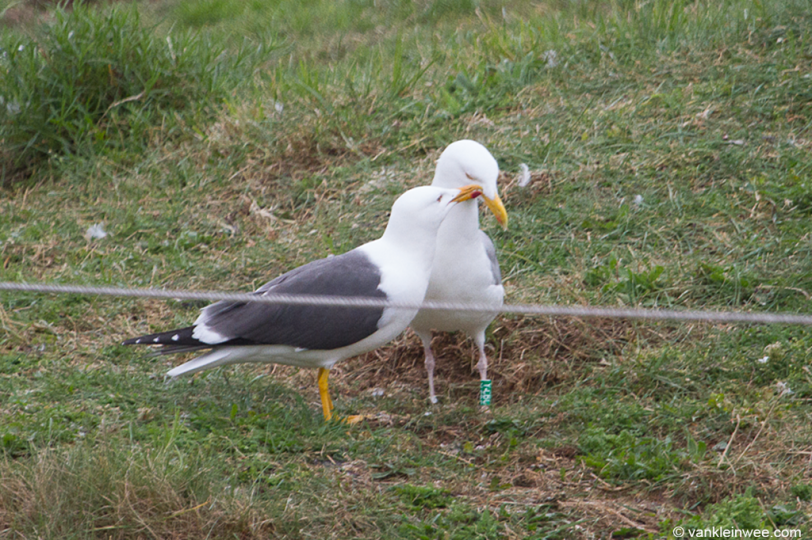


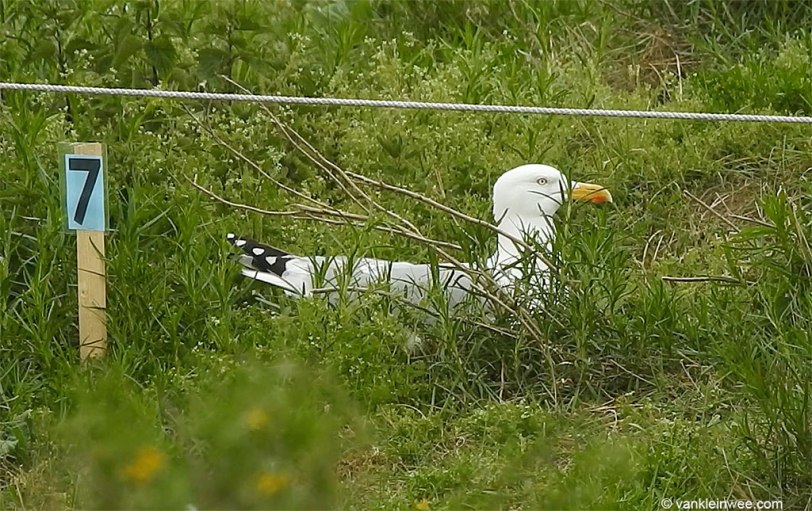
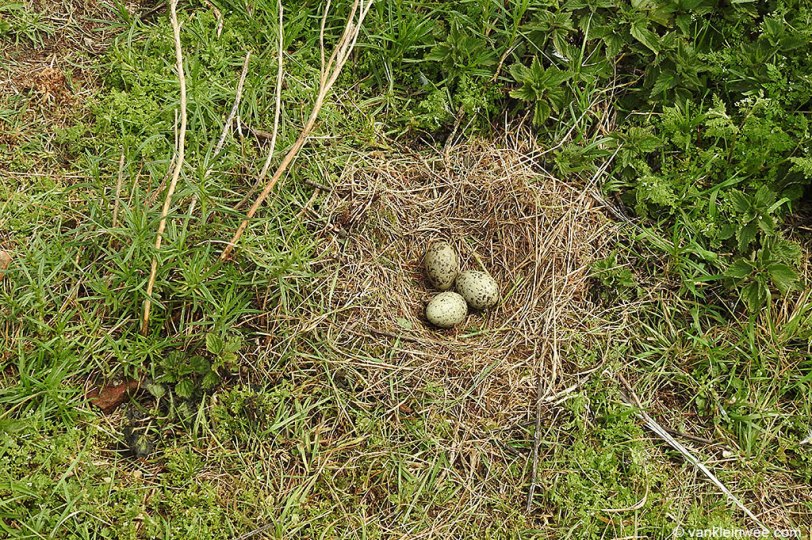
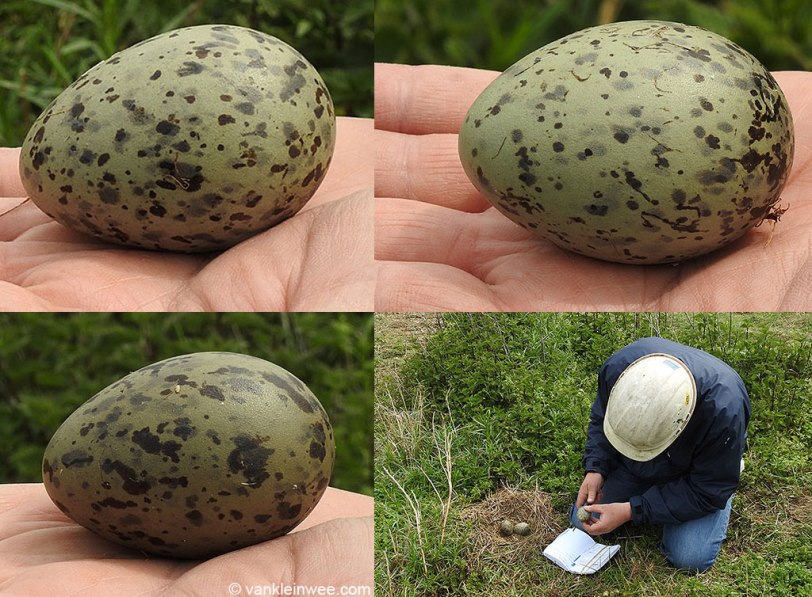
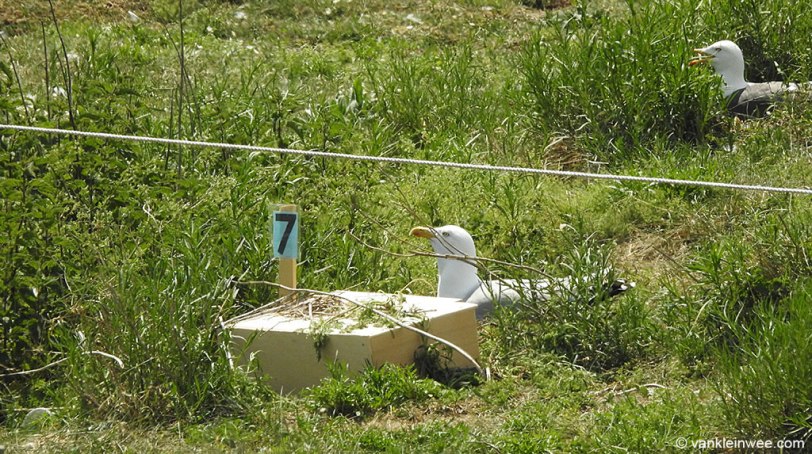
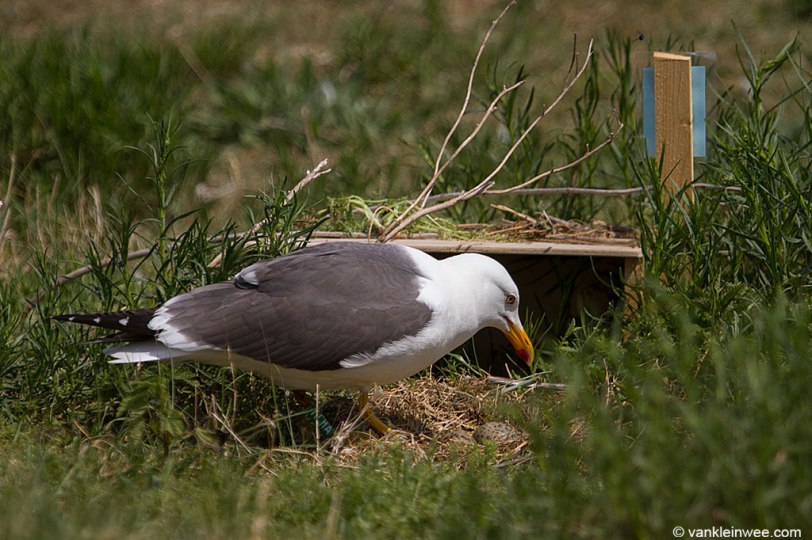
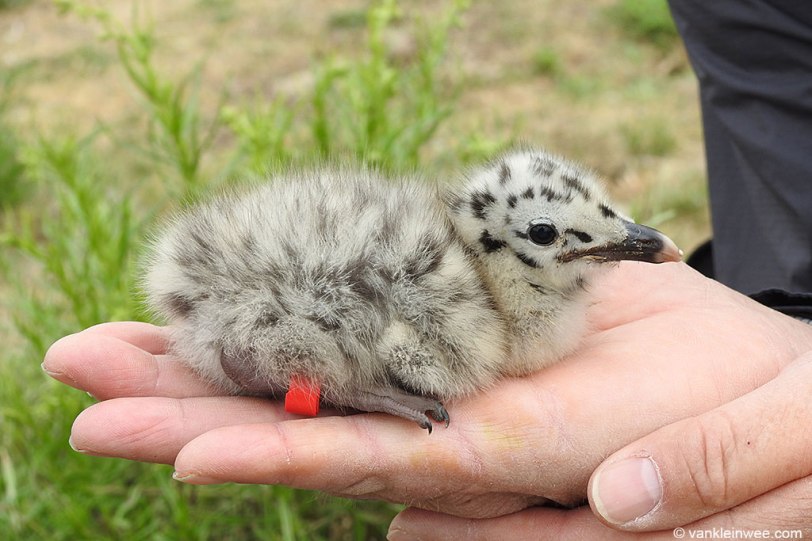
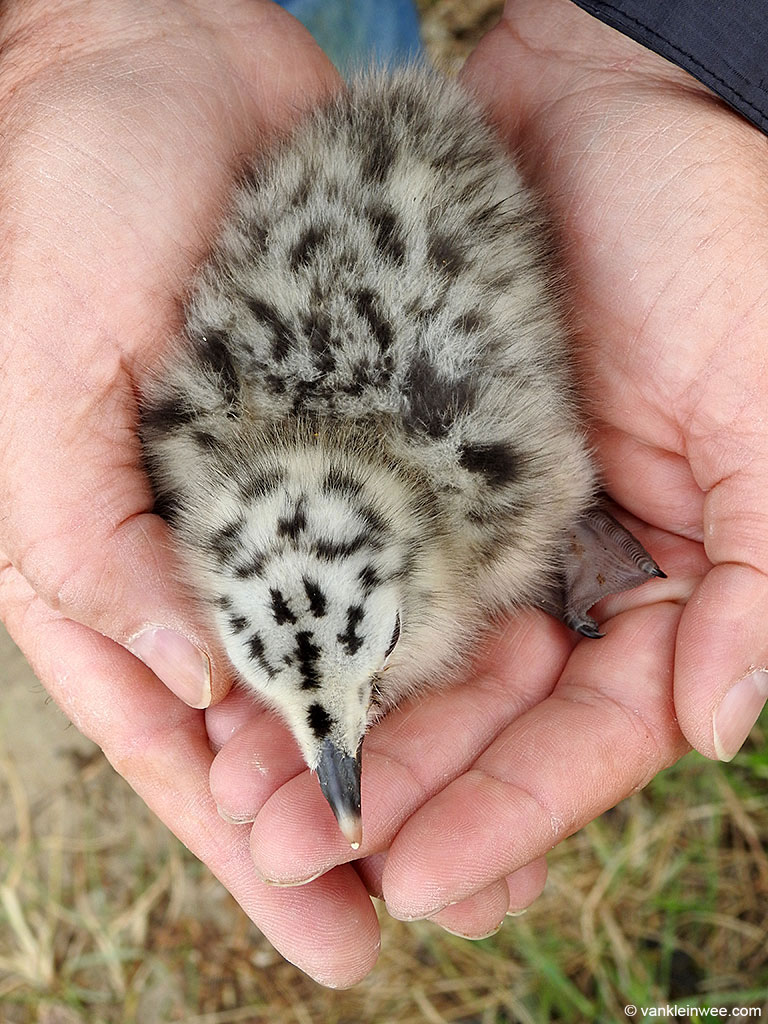

A real shame about the chick…fascinating post.